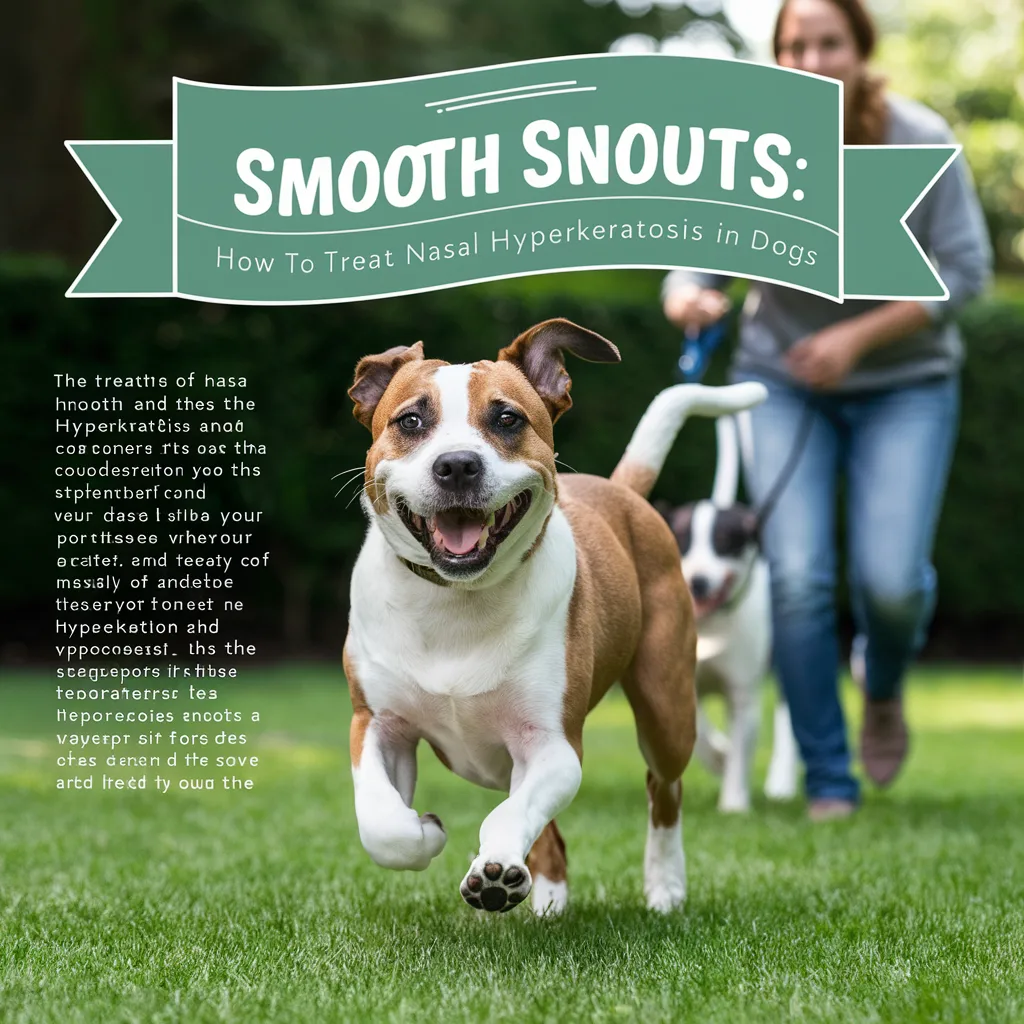Smooth Snouts: How to Treat Nasal Hyperkeratosis in Dogs

Nasal hyperkeratosis, also known as crusty or dry nose, is a condition where a dog’s nose becomes excessively dry and cracked. While it may not be life-threatening, it can cause discomfort and indicate underlying health issues. Here’s how to treat nasal hyperkeratosis and keep your dog’s nose smooth and healthy.
What is Nasal Hyperkeratosis?
Nasal hyperkeratosis occurs when there is an overproduction of keratin, the protein that makes up the outer layer of skin. This leads to the formation of a thick, crusty layer on your dog’s nose. Common causes include:
- Genetic Predisposition: Some breeds, like Bulldogs and Boxers, are more prone to this condition.
- Environmental Factors: Extreme weather conditions can contribute to the dryness.
- Underlying Health Issues: Autoimmune diseases, infections, and allergies can also cause hyperkeratosis.
Signs of Nasal Hyperkeratosis
Look out for these signs to determine if your dog is suffering from nasal hyperkeratosis:
- Dry, rough, or crusty nose
- Cracked or peeling skin on the nose
- Discoloration or thickening of the nasal tissue
- Discomfort or sensitivity when touched
How to Treat Nasal Hyperkeratosis
1. Regular Moisturizing
Apply a pet-safe moisturizing balm or ointment to your dog’s nose regularly. Products containing natural ingredients like shea butter, coconut oil, or beeswax are excellent choices.
2. Hydration
Ensure your dog stays well-hydrated. Provide fresh water at all times and consider incorporating wet food into their diet if they primarily eat dry kibble.
3. Environmental Adjustments
Protect your dog’s nose from harsh weather. In cold weather, consider using a dog-safe balm before walks. In hot weather, provide shade and avoid prolonged sun exposure.
4. Regular Veterinary Check-ups
Regular check-ups with your veterinarian can help identify any underlying health issues that might be contributing to the condition. Your vet can also recommend specific treatments tailored to your dog’s needs.
5. Avoid Harsh Chemicals
Avoid using products that contain harsh chemicals or fragrances on your dog’s nose. Stick to natural, pet-safe options to prevent further irritation.
Fun Fact:
Did you know that a dog’s sense of smell is estimated to be 10,000 to 100,000 times more sensitive than a human’s? Keeping their nose healthy is crucial for their well-being and ability to explore the world around them.
When to See a Vet
If your dog’s nasal hyperkeratosis doesn’t improve with home treatment or if you notice signs of infection, such as redness, swelling, or discharge, consult your veterinarian. They can provide additional treatments, such as antibiotics or medicated creams, to address the issue.
Conclusion
Nasal hyperkeratosis can be uncomfortable for your dog, but with the right care and attention, you can manage the condition effectively. Regular moisturizing, hydration, and environmental adjustments can go a long way in keeping your dog’s nose smooth and healthy. Always consult with your veterinarian for the best treatment plan tailored to your dog’s specific needs.



